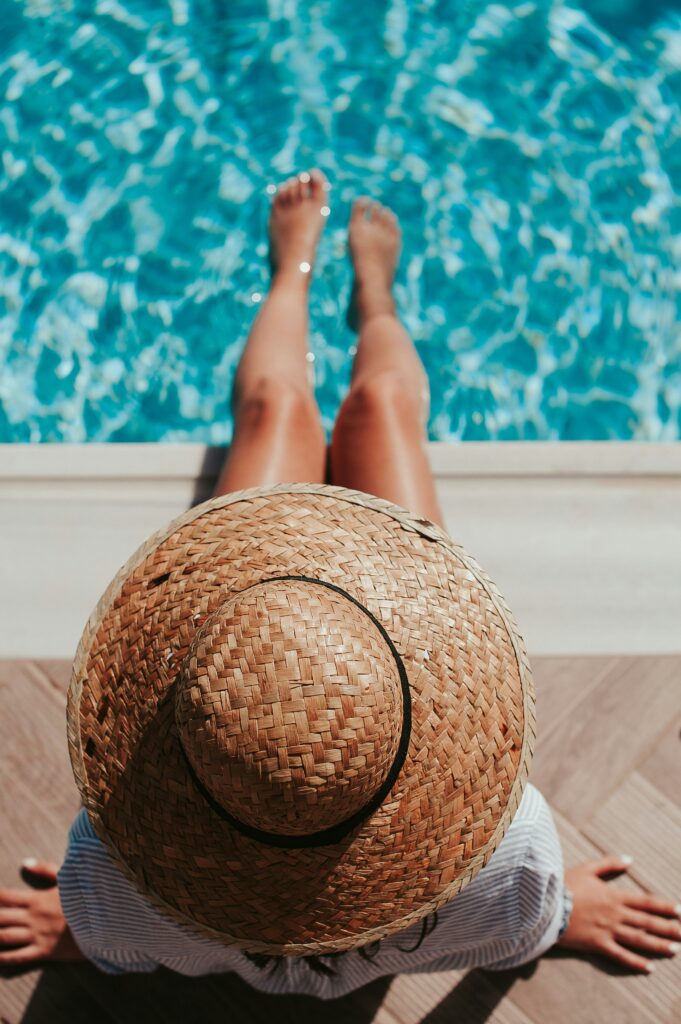Your cart is currently empty!

How to Prevent Heat Stroke and Sunburn
Summer is the season of sunshine, long walks, beach days, and backyard BBQs, but too much sun can turn a fun afternoon into a health emergency before you even realize what’s happening. Between rising temperatures and stronger UV rays, heat stroke and sunburn are two of the most common (and preventable) summer health issues. The good news? A few simple habits can help you stay safe, hydrated, and protected without missing out on the fun. In this guide, we’re breaking down how to prevent heat stroke and sunburn, what warning signs to watch for, and how to enjoy your time outdoors without putting your health at risk.
Understanding the Risks of Sun Exposure and Heat
Spending time outside is great for your mood, your sleep, and your overall health, but too much sun and heat can put serious stress on your body.
Heat-related illnesses happen when your body can’t cool itself fast enough. It often starts with heat exhaustion, think dizziness, nausea, headaches, or excessive sweating, and if not treated, it can escalate to heat stroke, a dangerous condition that requires emergency care. Heat stroke symptoms include confusion, rapid heartbeat, hot, dry skin, and even loss of consciousness.
Then there’s the sunburn side of things. While it may seem like just a short-term sting, sunburn is actually a form of skin damage caused by UV rays. Repeated sunburns can increase your risk of skin cancer, cause premature aging, and make your body more sensitive to heat.
Some people are more vulnerable than others, including:
- Children and babies
- Older adults
- People with chronic illnesses or those taking certain medications
- Anyone engaging in intense outdoor activity without proper hydration or sun protection
Understanding the risks is the first step to protecting yourself, and we’ve got simple, actionable tips coming up next.
How to Prevent Heat Stroke
Preventing heat stroke starts with being proactive, especially during heat waves or outdoor activities like hiking, gardening, or sports. These simple tips can make all the difference:
Stay Hydrated
Your body loses a lot of water through sweat when it’s hot out, even if you don’t feel thirsty. Aim to drink water consistently throughout the day, not just when you feel overheated. Electrolyte drinks can help too, especially if you’re sweating a lot.
Avoid Peak Heat Hours
Try to stay indoors or in the shade between 11 AM and 3 PM, when the sun is at its strongest. If you have to be outside, take frequent breaks and don’t overdo it.
Dress for the Weather
Wear lightweight, loose-fitting, light-colored clothing that allows your body to breathe. Natural fabrics like cotton are great for airflow.
Rest and Cool Down Often
Even short breaks in the shade or air conditioning can help your body regulate its temperature. Plan cooldown periods into your day, especially during prolonged outdoor activity.
Know the Warning Signs
Early symptoms of heat exhaustion include:
- Heavy sweating
- Nausea or headache
- Weakness or dizziness
- Cool, pale, clammy skin
If you notice these signs, stop, rest, hydrate, and get to a cooler space immediately. Ignoring them can lead to heat stroke.

How to Prevent Sunburn
Sunburn might seem like just a minor summer nuisance, but it’s actually a form of radiation burn, and too much of it increases your risk of skin cancer, premature aging, and heat-related illness. The good news? Sunburn is easy to prevent with a few thoughtful steps.
Use Sunscreen (and Reapply!)
Choose a broad-spectrum sunscreen with at least SPF 30 and apply it 15–30 minutes before heading outside. Don’t forget to reapply every 2 hours, or more often if you’re swimming or sweating.
Cover Up Smartly
A wide-brimmed hat can protect your face, scalp, and neck, some of the most commonly burned areas. Add UV-protective sunglasses and lightweight long-sleeved clothing for added defense.
Seek Shade When You Can
Whether it’s an umbrella at the beach, a tree at the park, or a covered patio, shade is your friend. Plan your time outdoors around shaded areas, especially during midday sun.
Don’t Forget the “Forgotten Spots”
Some of the most painful burns happen in places we don’t think about:
- Ears
- Tops of feet
- Back of the neck
- Scalp (especially if you have fine or thinning hair)
- Lips (use SPF lip balm!)
Protecting your skin consistently helps prevent not just sunburn, but also long-term damage. Small steps go a long way.
What to Do If You Get Too Much Sun
Even with the best planning, sometimes the sun sneaks up on you. Whether it’s a long beach day or an unexpected heatwave, here’s how to care for yourself if you’ve overdone it.
For Sunburn Relief:
- Cool it down: Apply a cold compress or take a cool (not icy) shower to soothe the burn.
- Moisturize gently: Use aloe vera or a fragrance-free lotion to keep skin hydrated and calm inflammation.
- Stay hydrated: Drink extra water to help your body heal and rehydrate.
- Avoid more sun exposure: Keep the area covered and out of direct sun until fully healed.
If your sunburn blisters, causes fever or chills, or covers a large area of your body, it’s time to call a healthcare provider.
For Heat Exhaustion or Heat Stroke:
Heat exhaustion symptoms include nausea, heavy sweating, dizziness, headache, or weakness. If you notice any of these:
- Get to a cooler space (preferably air-conditioned)
- Lie down and elevate your feet slightly
- Sip cool water slowly
- Apply a cold, damp cloth to your skin
If symptoms worsen or if you see signs of heat stroke, like confusion, slurred speech, or skin that’s hot and dry, seek emergency help immediately. Heat stroke is a medical emergency and should never be ignored.
Small Habits That Make a Big Difference
You don’t need to cancel your beach trips or avoid the sunshine to stay healthy; you just need to build a few smart habits into your day. These small adjustments can help you soak up the fun without the burn or the burnout.
Pack a Sun Safety Kit
Before you head out, toss a few essentials in your bag: sunscreen, a refillable water bottle, a hat, lip balm with SPF, and a pair of sunglasses. It takes two minutes, and your future self will thank you.
Make Hydration a Routine
Start your day with water, carry a bottle with you, and set phone reminders if needed. Add fresh fruit or electrolyte tablets if plain water feels boring.
Teach Kids Sun Safety Early
Turn it into a game: Who can put on sunscreen first? Who remembers their hat? Teaching healthy habits young makes them stick.
Listen to Your Body
Feeling dizzy? Stop and cool down. Skin feeling warm and tight? Get in the shade. Learning to notice and respect your body’s early warning signs can prevent bigger problems later.
Staying safe in the sun doesn’t have to be complicated; it just has to be consistent.
From sun safety to everyday health habits, we’re here to help you feel your best—one simple step at a time. Sign up for the Healthy American newsletter to get practical wellness tips, seasonal health guides, and helpful resources delivered straight to your inbox.
Stay safe, stay informed, and stay well.

Leave a Reply